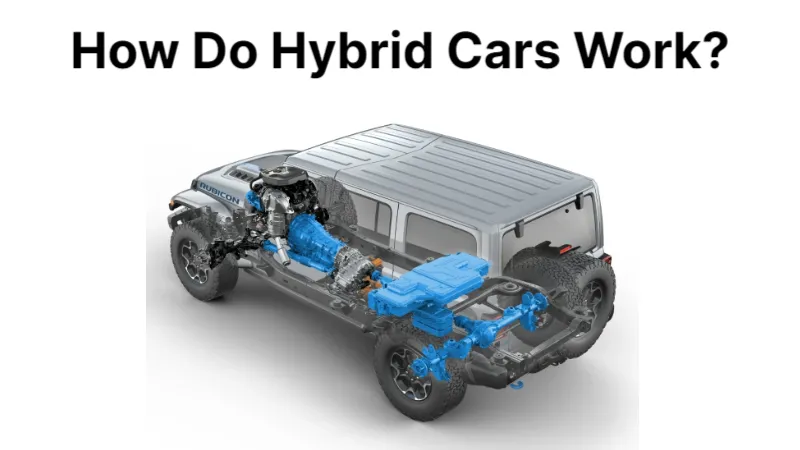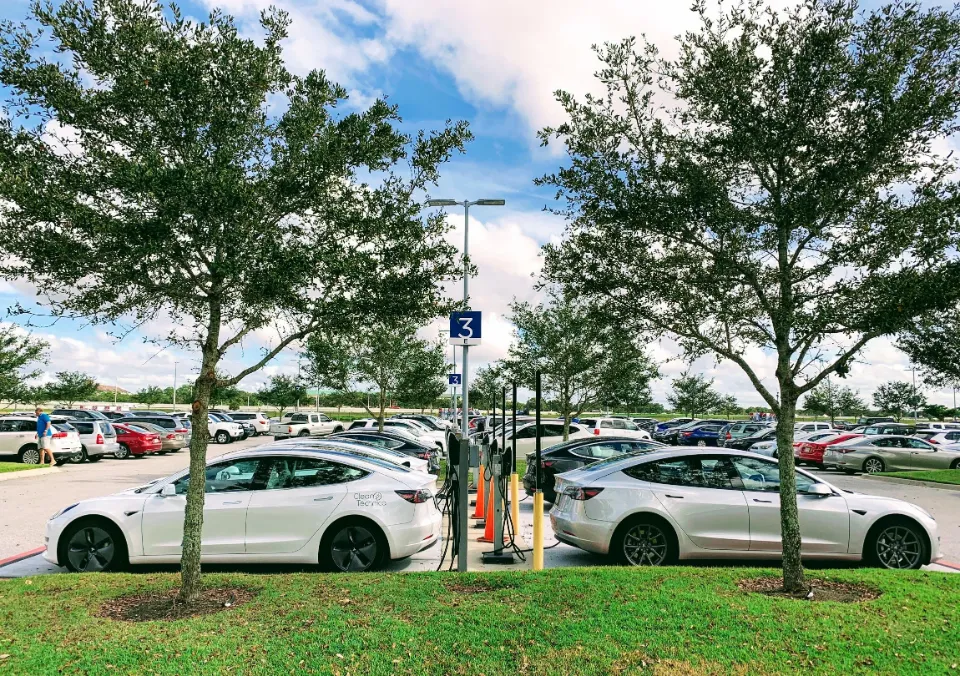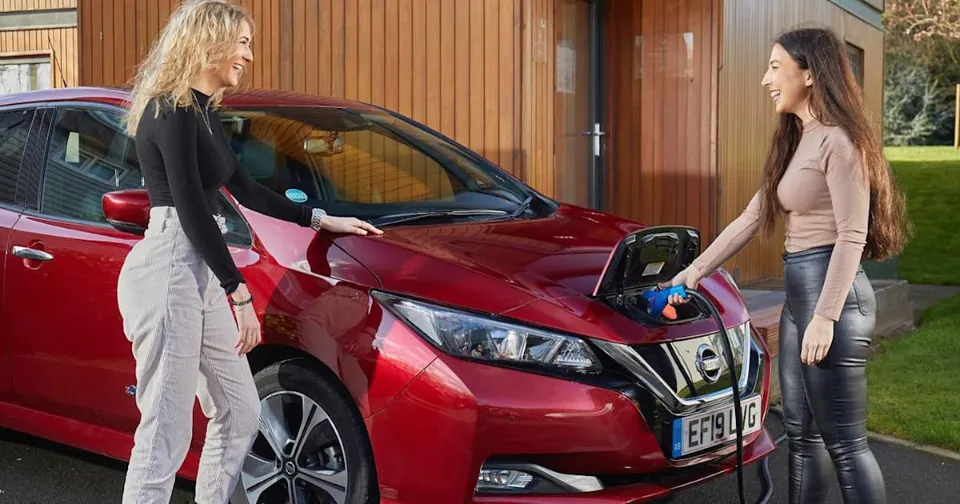There are many hybrid vehicles available on the market today, and the majority of automakers have stated that they will produce their own versions. So, how do hybrid cars work?
By increasing the gas engine’s efficiency during acceleration, coasting, braking, and idling, hybrid vehicles primarily reduce their fuel consumption. Due to their secondary power source, hybrids can be powered by less potent and more efficient gas engines than conventional vehicles.
What is a Hybrid Car?
Hybrid vehicles combine an internal combustion engine with one or more battery-powered electric motors. (A hybrid car runs on both gas and electricity. The face of environmentally friendly driving options has been drastically altered by this technology. Read on to find out more about Hybrid Car Batteries.) The combined use of these two power sources improves a vehicle’s fuel efficiency. Regular hybrid vehicles never need to be plugged in, but they can only travel short distances and at slow speeds when using only electric power.
The performance of a hybrid is unaffected by the size of the battery, unlike plug-in hybrids or electric vehicles (EVs). A hybrid battery typically has a capacity of one to two kilowatt-hours (some EV batteries have capacities of more than 100 kilowatt-hours) of electricity, which is just enough to act as a buffer while the vehicle continuously discharges and recharges the battery. The cost-control strategy relies heavily on this tiny battery.
Editor’s Tip: Here’s the answer to “How Do Plug-In Hybrid Electric Cars Work?” In plug-in hybrid electric vehicles (PHEVs), an internal combustion engine (ICE) is powered by another fuel, such as gasoline, while an electric motor is powered by batteries. The ICE, a wall outlet, a charging device, or regenerative braking can all be used to charge PHEV batteries. Usually, the car runs on electricity until the battery is almost completely gone, at which point it switches over to using ICE.
Question: What are Hybrids Vs. Plug-in Hybrids, and how do the two types of vehicle compare?
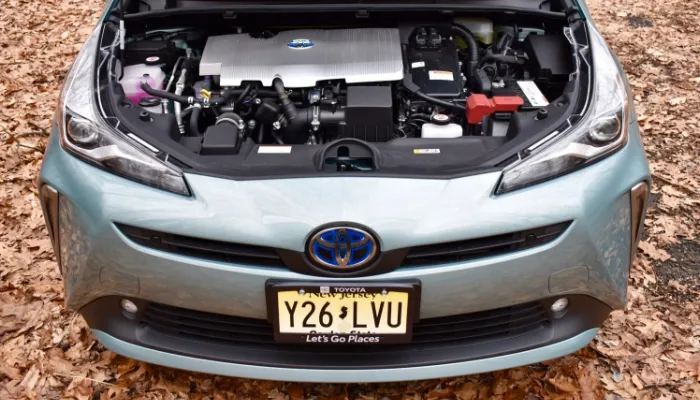
How Does a Hybrid Car Work?
By increasing a gas engine’s efficiency during acceleration, coasting, deceleration, and idling, hybrid vehicles primarily reduce fuel consumption. A hybrid car can be fitted with a less potent, more effective gas engine than a conventional car because it has a backup power source.
The Atkinson cycle, which these engines typically use, minimizes the energy losses associated with pumping air into the engine at the expense of power and torque. The electric motor adds extra torque during acceleration to make up for the engine’s diminished performance.
Regenerative braking is the second fuel-saving technique used by hybrid vehicles. In a typical gas-powered car, any energy expended to slow down the car turns into heat and is essentially lost. When a hybrid car slows down, an electric motor works as a generator, converting the motion’s energy into electricity and storing it in the battery for later use.
In order to save fuel, hybrid vehicles can also switch off their gas engines while coasting or at stoplights. Similar auto stop/start technology is found in many non-hybrid gas vehicles, but the engine is typically shut off for shorter periods of time.
Suggested reading: Thankfully, the market for used hybrids is rich enough for us to pick and choose those with the highest safety and reliability ratings, plus low overall cost of ownership. The best used hybrid cars are those listed here.
Type of Hybrid Vehicles
Below are the types of hybrid cars:
Parallel Hybrid
The most popular design in use connects the gasoline engine and electric motor(s) in a single transmission, combining the two power sources. This transmission may be an automatic, a manual, or a continuously variable transmission (CVT). The Toyota Prius and Chevrolet Volt both use power-split CVTs, which are a very well-liked hybrid transmission. The size of the gasoline engine and the type of transmission are the main determinants of the acceleration, sound, and feel of a parallel hybrid. Toyota, Lexus, Hyundai, Kia, Ford, Honda, Lincoln, Nissan, and Infiniti are among the brands that employ the parallel design. (Editor’s tip: Just like with all cars, your Prius’ battery will eventually need to be replaced. But when will that be? How long do Toyota Prius batteries last?)
Series Hybrid
The thrust is all produced by the electric motor(s) in this design, and the engine and wheels are never physically connected mechanically. The purpose of the gasoline engine is only to recharge the battery. This produces smoother, more powerful acceleration and a driving experience more akin to that of an electric vehicle. When a gasoline engine starts, vibration is typically reduced. The engine may be revving up while the car is cruising at a steady speed because that engagement doesn’t always occur in concert with what your right foot is doing (remember, the battery is making the demands). Some people find this behavior unsettling. The BMW i3 with the range extender is an example of a series hybrid. (Related: How Long Do Hybrid Car Batteries Last? About 100,000 miles should be covered by the majority of hybrid batteries. Some owners are able to increase this number to 200,000 with excellent maintenance.)
Plug-In Hybrid
An electric car’s battery pack must be fully recharged using an external electricity source, such as one from your home, place of business, or public charging station. Plug-in hybrids improve on the traditional hybrid concept by adding a much larger battery pack. This increased capacity for energy storage functions similarly to a bigger gas tank in that it enables longer all-electric ranges (between 15 and 55 miles, depending on the model) while also lowering fuel consumption. In fact, if you have a short commute and recharge every night, you’ll be using electricity the majority of the time. If the all-electric range is used up, the vehicle essentially transforms back into a standard parallel hybrid. The Chrysler Pacifica plug-in hybrid (shown above) is an example of the plug-in breed.
Here is a quick look at Hybrid Vs Gas Car. A gas-powered car only has a traditional gas engine, while a hybrid vehicle also has an electric motor. Since hybrid vehicles can switch between their gas and electric motors while being driven, they typically have higher fuel efficiency than their gasoline-powered counterparts.
Hybrid Car Components: Engine, Electric Motor, Transmission
Hybrid powertrains can be set up in a variety of ways, but they all share a common set of fundamental parts in various forms. The familiar gasoline engine is first, and it is frequently smaller than non-hybrid models in order to save more fuel while still providing the same amount of power thanks to an electric motor.
The Atkinson cycle, in which the intake valve is later closed to increase efficiency, is frequently used by gas engines in a hybrid system rather than the standard Otto cycle. Because of this, the engine produces less power, but the electric motor can easily make up the difference.
Hybrid automobiles use a variety of transmissions, including dual-clutch manual transmissions, conventional torque-converter automatics, and planetary CVTs. The automobiles also come equipped with one or more electric motors, which could be housed either inside the transmission or in a separate module.
In a hybrid configuration, such as that found in the Toyota RAV4 Hybrid, adding an additional electric motor to the rear axle allows for all-wheel drive (AWD) without the need to mechanically transfer the engine’s drive from the front of the car to the rear, saving fuel and releasing interior space.
A generator will be produced by one or more of the motors. It is spun by the rotating wheels while braking, converting heat energy typically lost by friction brakes into electrical energy to recharge the high-voltage battery. This is “regenerative braking,” which handles the majority of the braking in a hybrid vehicle. When stopping more forcefully, the traditional friction brakes—typically discs and pads—will supplement regenerative braking.
Read about What Does GPS Mean?
Hybrid Car Components: Battery and Electronics
Additionally, using engine power, the high-voltage drive battery is charged. Depending on the power needed and the amount of packaging space available, various hybrid vehicles use batteries with a variety of capacities and chemistries. In hybrid vehicles, particularly those made by Toyota, which still favors the more established but older nickel-metal hydride (NiMH) chemistry, the more powerful but also more expensive lithium-ion batteries seen in EVs like Teslas are less common.
The inverter, another system component, converts DC current to AC for use in other system components, such as powering an electric motor. A DC/DC converter is also present, converting DC power between 12V for the low-voltage electrical system and the high voltage used for the drive motor. To power accessories like headlights and the infotainment system, hybrid cars still use this system, which includes a conventional 12V battery. And to make sure the intricate hybrid system functions as a whole, there are electronic control units.
Editor’s Advice: How Much Does a Hybrid Battery Cost? Compared to conventional gasoline-only vehicles, hybrids use different batteries, and their prices range from $1,000 to $8,000. The final cost you’ll incur is determined by the make and model of your car as well as whether you choose a new or refurbished battery.
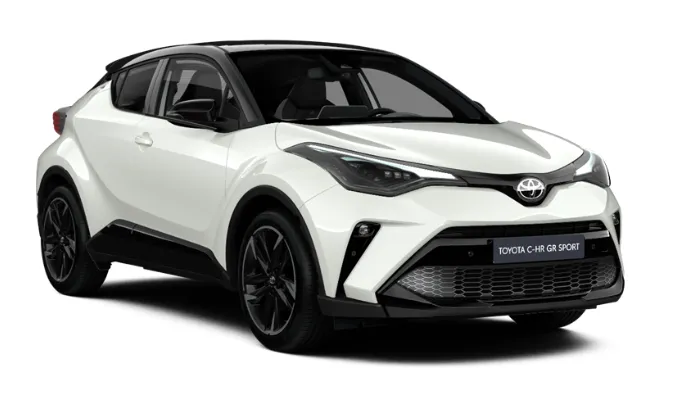
Gasoline Power Vs. Electric Power
The gasoline-electric hybrid car is just what it sounds like — a cross between a gasoline-powered car and an electric car. Let’s begin by comparing some diagrams to show how a typical electric car differs from a car that is powered by gasoline.
A gas-powered car has a fuel tank, which supplies gasoline to the engine. The engine then turns a transmission, which turns the wheels.
An electric car, on the other hand, has a set of batteries that provides electricity to an electric motor. The motor rotates the transmission, which then rotates the wheels.
A compromise, the hybrid. It makes an effort to improve upon the drawbacks of an electric vehicle while significantly enhancing gas-powered vehicle mileage and lowering emissions.
A car needs to meet a certain set of minimum standards in order to be useful to you or me. The car should be able to:
- Drive at least 300 miles (482 km) before re-fueling
- Be refueled quickly and easily
- Keep up with the other traffic on the road
These requirements are met by a gasoline vehicle, but it pollutes heavily and typically has poor fuel efficiency. However, an electric car can only travel 50 to 100 miles (80 to 161 km) between charges and emits almost no pollution. The issue with the electric car’s charging is that it is both cumbersome and extremely slow.
These two systems are combined into one in a gasoline-electric vehicle, which makes use of both gas and electric power.
The Future of Hybrids
The use of hybrid technology is not universal among automakers. Some, like General Motors and Volkswagen with the new ID.4 crossover, are jumping straight to Pure-electric vehicles are still not the best option for every Canadian buyer due to Canada’s geography and the current localized EV recharging infrastructure.
The good news is that additional car manufacturers are investing in hybrid technology. Several new models from Hyundai-Kia are currently available for purchase. Ford’s new Maverick compact pickup has been hybridized, and Mitsubishi has updated its best-selling Outlander PHEV. The company that manufactures the most popular hybrids in Canada is Toyota. More than a quarter of all Toyota and Lexus vehicles sold in Canada in 2021 were electrified models. The brand is expanding its lineup of hybrid vehicles for 2022 with the release of the Tundra i-Force Max and an upcoming Sequoia full-size SUV with the same drivetrain. (Are hybrid cars good for long distance driving? How far a typical hybrid can travel will be covered in this blog.)
Without sacrificing the usefulness of an onboard gas engine for longer trips, hybrids are a great way to reduce your fuel costs, GHG tailpipe emissions, or add power to your truck. We anticipate that for years to come, the core of the Canadian auto market will consist of fuel-efficient hybrid cars, SUVs, and pickups alongside the burgeoning pure-electric vehicles.
When considering a gasoline/electric vehicle, take a quick look at the benefits of hybrid cars to see how many of these features you may not have previously thought about. The benefits of hybrid cars include Reducing Fuel Costs, Fewer Emissions, Instant Torque, No Idling, Tax Incentives…
Summary: How Do Hybrid Cars Work?
Hybrid cars primarily reduce fuel consumption by increasing the gas engine’s efficiency during acceleration, coasting, slowing down, and idling. Due to their secondary power source, hybrids can be powered by less potent and more efficient gas engines than conventional vehicles.

